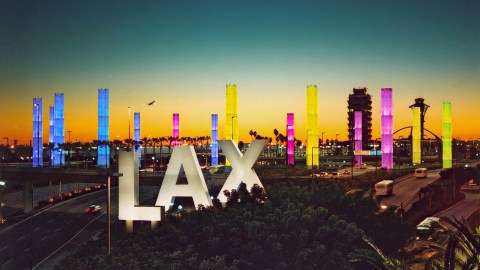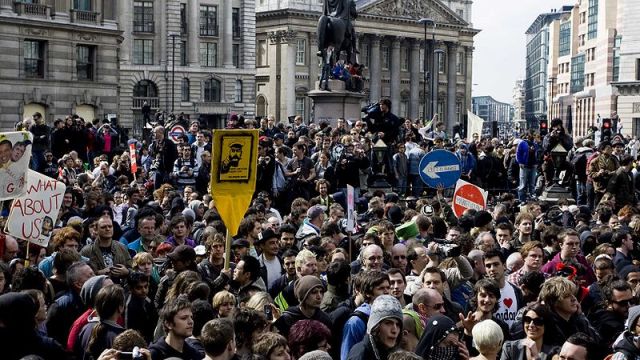PUBLIC ART – SITE SPECIFIC INSTALLATIONS | LOS ANGELES

When attending the Mobius LA forum hosted by the American Institute of Architecture this weekend, a lecture about site-specific art picked my brain. I became obsessed by the subject of Public Art and how it contributes to a community’s identity. I decided then to contact Merry Norris, one of the lecture’s speakers, and a key figure in Los Angeles’ Public Art scene. Ms. Norris, an Art consultant-advocate, has collaborated with some of Los Angeles’s biggest firms including Gehry Partners and Morphosis. Her projects have become even more visible since she switched her focus from residential and corporate consulting to public art. “Originally, I hadn’t thought there was interest in the city,” she admits. “But there was!” Anyone who has flown through Los Angeles International Airport gets an introduction to Merry Norris’s Contemporary Art. In her role as liaison for the Gateway LAX Enhancements Project, Norris supervised one of LA’s most iconic art installations: the series of massive colorful LED-lit pylons (designed by Ted Tokio Tanaka Architects and multimedia artist Paul Tzanetopoulos), and the LAX sign (commissioned to Selbert Perkins Design). Smaller projects around town, illustrate Norris’ devotion to Public Art. She commissioned April Greiman to paint a two-part oil mural on an Arquitectonica building above a Korea town metro station. For the Cedars-Sinai Comprehensive Cancer Institute by Morphosis, Norris turned to Grant Mudford, for his architectural photography. One of her latest projects – a site-specific installation for the former Hyatt Hotel – brings Contemporary Art to the infamous Sunset Strip. For this she commissioned Jacob Hashimoto to create laser-cut aluminum panels to hang outside the restaurant. “Both diners and people on Sunset Boulevard can enjoy the art,” she explains. Norris is also responsible for the ‘Calder-esque’ mobile sculptures by LA artist Peter Shire along Santa Monica Boulevard, between La Cienega and Doheny. From ancient civilizations to today, the arts have been fully integrated in the cityscape. Yet, the civic role of Public Art has drastically evolved. In ancient civilizations, builders would be commissioned to produce a building and an artist commissioned to produce a figurative representation – be it a mural painting or a sculpture – usually religious or political portraiture. Both the architect and the artist were perceived simply as craftsmen. Today an architect can be considered an artist, and the artist’s work and responsibility extend beyond the craftsmanship dimension. It is interesting to observe both how Public Art’s role has evolved along with its form, and the interconnection of an evolving urban environment and its community. “Los Angeles is a young town, in constant redefinition of itself, and with a very singular urbanism” explains Merry. “The pedestrians are quasi non-existent. Streets have mostly been designed for car drivers. This specificity has a natural impact on the Public Art installations’ form.” Merry confirms that “It is challenging to commission a civic art installation and balance the creative desires and interests of the artist, the architect, the city and the people who will ultimately experience these works. To the people’s fortune, architects are able today to express their creativity and produce a building that can be considered a piece of Art. This can make the integration of a site-specific art installation complicated. Some architect would feel that his architectural piece doesn’t need any ornament. And the architectural canvas gives a frame to the artist’s creativity. It is an interesting challenge for all parties.” What is the City of Los Angeles’ involvement into the Arts? Due to my French background, I can’t help but compare the level of interest in civic art projects between Los Angeles and Paris. The two cities have very different political systems, coming from different histories. In France, the government is highly involved in the promotion and endowment of the Arts. While in the US, the funding and support of the Arts comes mostly from private sectors and patrons. When a museum or a cultural project is initiated and funded by an individual rather than a governmental entity is it done out of self-promotion or out of altruism, and how does the motivation impact the art project and its civic function? A government supporting the Arts has for interests to promote its country and its cultural identity, to conserve its legacy; to educate, and to nurture creativity. However a system, such as the one in France, is slowed by budgetary limits and the bureaucratic system. Thus, France’s potential patrons rely on the government endowment for the Arts and believe that the money they give back through the tax system should support all Public Art projects. As far as Los Angeles is concerned: Otis College of Art and Design made a report about the creative economy in 2008, in California. It states that this economic sector is bringing in $3.8 billion in state tax revenues. Meanwhile California is one of the latest in the nation for arts and education funding. It is surprising to realize that a state, which economy relies so much on the creative sector – from Entertainment, to Architecture, Graphic design, Fine Arts, and Music – do not give more public value to the Arts and the Education of its community. The good news is that the state of California has implemented a law that requires all real estate developers to allocate 1% of their budget to site-specific art installations. I asked Merry about her opinion regarding this approach; and would an increase in public endowment aid the creation of public works. “Los Angeles’ enthusiasm about the Arts arose in the seventies.” She said. “The public curiosity has grown considerably in the past ten years. In part it may come from the media effervescence about the Art market. There is a social phenomenon that might have influenced the real estate developers and the politicians. The audience got wider as well. Because of its young history, our city is still defining its cultural identity. We are all making it up as we go!” The Greeks felt that when a society no longer valued the arts, its very democracy was threatened. i dare to say the same is at stake in California – our democracy. The lack of equal access to high quality public education means that only the wealthiest segment of our society will advance and prosper, leaving behind a rapidly growing number of drop-outs and under-educated youth. i don’t have to point out the deleterious effect of this kind of colossal waste of human capital, both on our state and our nation. Merry is now working with Related and Gehry Partners on arguably the city’s largest undertaking to date. A mixed-use development aimed at jump-starting the civic and cultural life of downtown, the Grand Avenue Project is intended to comprise condominiums, a hotel, shops, and restaurants, all sprawling over more than 3.6 million square feet around the axis between the Walt Disney Concert Hall and the Museum of Contemporary Art. The estimated cost is $3 billion, and Norris, as art consultant for phase one, has a budget of more than $6 million. She reports that she’s assembled a short list of five international artists. As far as specific names are concerned, it’s L.A. confidential.





